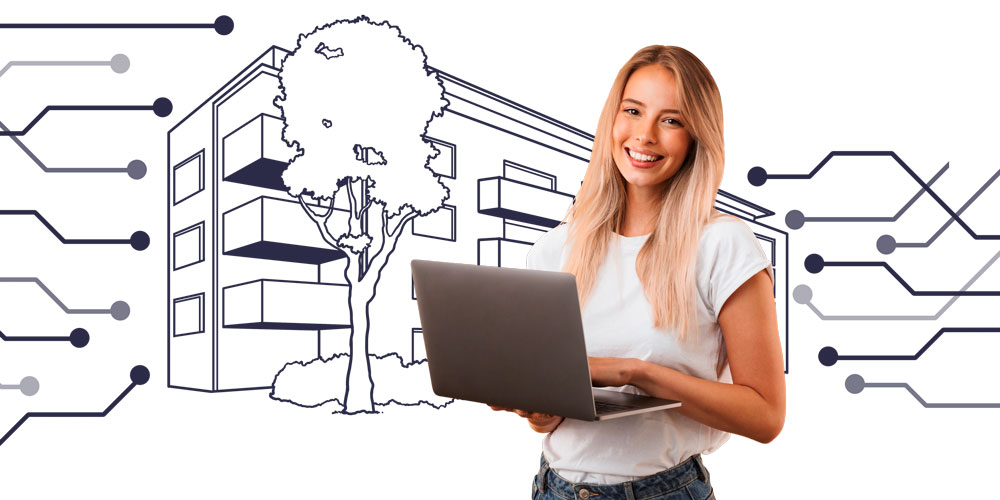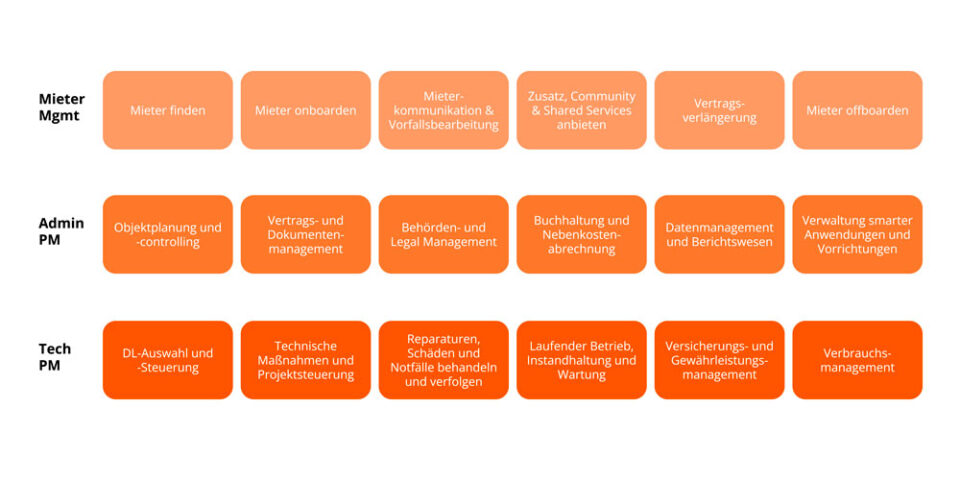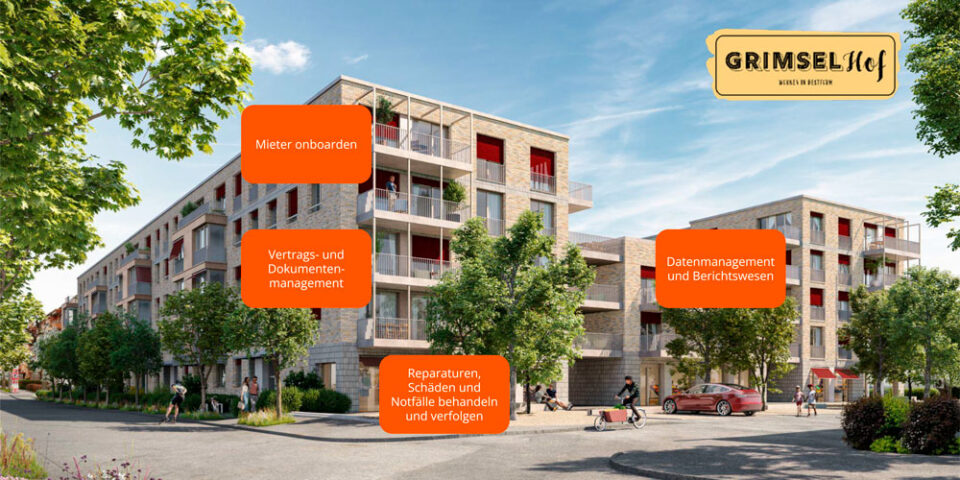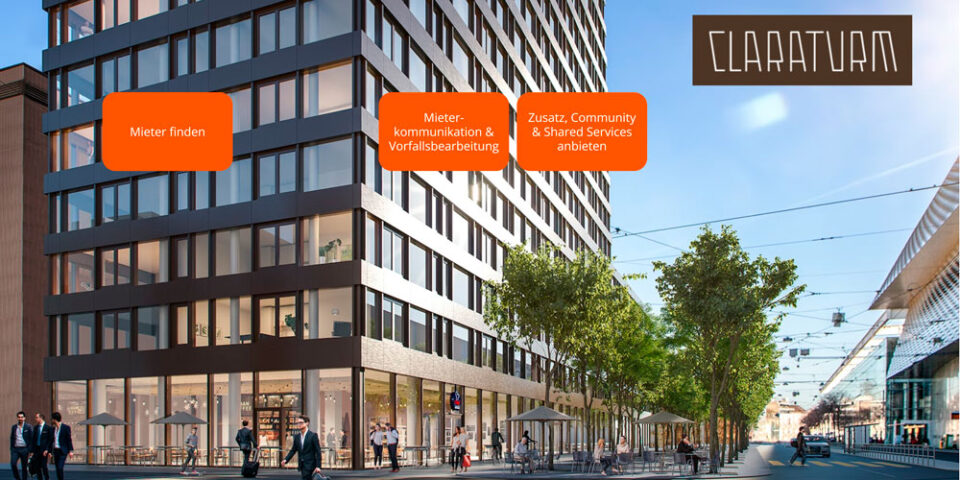Digital operators: A perspective for future property management

HOW WOULD YOU BUILD AN ORGANISATION THAT MANAGES AND OPERATES REAL ESTATE TODAY IF YOU COULD START AGAIN FROM SCRATCH? IN THIS ARTICLE, STEFAN ZANETTI AND MARTIN EHRAT EXPLORE THE QUESTION OF HOW TO BUILD A DIGITAL OPERATOR USING TODAY'S DIGITAL SOLUTIONS THAT IS UP TO 30% MORE EFFICIENT, 100% USER-FOCUSED AND, WHAT'S MORE, ESG-COMPLIANT.
The digital challenge in real estate portfolios
Digitalisation has fully arrived in the real estate industry. Great potential is seen in particular in management. Regulatory requirements, e.g. from the sustainability/ESG environment, pressure for efficiency and new user requirements or utilisation concepts really only lead to one conclusion: in the future, it will no longer be possible to operate real estate the way it was done in the last century.
Digital solutions promise relief in very different areas of management. However, these potentials are not easy to realise: Property portfolios are acquired over years and decades. Accordingly, the process and software landscape for operating these portfolios also grows over years. Moreover, this spans numerous process steps: Systematically digitising the operation of real estate is therefore a challenge whose solution is becoming increasingly urgent.
Instead of building more applications step by step and trying to patch up a grown overall system, various real estate owners and managers have taken a different approach in the past two years, namely that of a “greenfield approach”: How would one design a maximally digitised real estate operation if one could start all over again – on a greenfield site?
Against this background, the first thing to consider was which “jobs” will actually have to be done in the future. It can be assumed that some traditional jobs will continue to exist, some will be eliminated by digitalisation and some will be added. The aim was to identify individual large blocks of tasks that can be understood in themselves.
It is helpful to divide the jobs into three large categories: Tenant management, commercial property management and technical property management. It has been shown that all essential jobs-to-be-done in real estate operations can be mapped in a 3×6 matrix.
Building a digital operator on a greenfield site then follows the logic of supporting these individual jobs-to-bedone FIRST with modern software components in such a way that a seamless platform is created in which as many processes as possible are automated. Only THEN is it considered for which activities employees are deployed, who can then achieve all the greater added value for the users of these properties. The goal is therefore not primarily to increase efficiency, but to use the increasingly scarce personnel in management for those activities that really create added value.
Of course, the potential benefits are not equally large in all process steps and implementation is therefore not equally urgent everywhere. Prioritisation along the dimensions of efficiency and revenue impact, influence on sustainability dimensions, tenant satisfaction and transparency is important. A toolbox that shows the possible tools in all process steps and allows prioritisation according to different functions helps to create an actual roadmap.
It is equally important to have suitable tools at hand that connect the different systems with each other, for example an integration or orchestration platform like the one from Allthings. The goal is precisely to prevent the separate use of isolated solutions. If you make the right choice of partners capable of integration at an early stage, you establish a networked ecosystem.
Pragmatic implementation using the example of UBS
But how do you put this into practice? Once the vision is clear – to establish a maximum digital operator with an integrated platform via various software components – then a step-by-step approach is suitable for implementation. A whole series of real estate owners and service providers have embarked on this path in recent years.
UBS, one of the largest real estate investors in Switzerland, is also pursuing such approaches in its digital innovation projects in real estate operations.
UBS has chosen the path of first testing and validating individual jobs-to-be-done via individual new construction projects, which will play an essential role for an integrated platform in the future.
For example, the processes “finding tenants”, “tenant communication”, “incident processing” and offering additional community services were tested on the Claraturm in Basel.
On the combined renovation/new construction project Grimselhof in Altstetten, on the other hand, the processes “onboarding”, “contract and data management”, “document management and reporting” and new ways of processing repairs and damages were to be implemented. In this way, the various jobs-to-be-done can be validated over time and combined into an overall platform.
The design of a plan to build digital operators is usually easy to map out in a series of 3-4 workshops. The process depicted in the diagram shows an ideal-typical sequence of a planning project for establishing a digital operator.
Previous experience with greenfield approaches shows that a systematic implementation of a digital operator in cooperation with real estate owners and service providers makes the operation of real estate up to 30% more efficient, 100% more tenant-centred, and sustainability-oriented from day 1 – and also eliminates a lot of classic conflicting goals that result from conventional business models.


